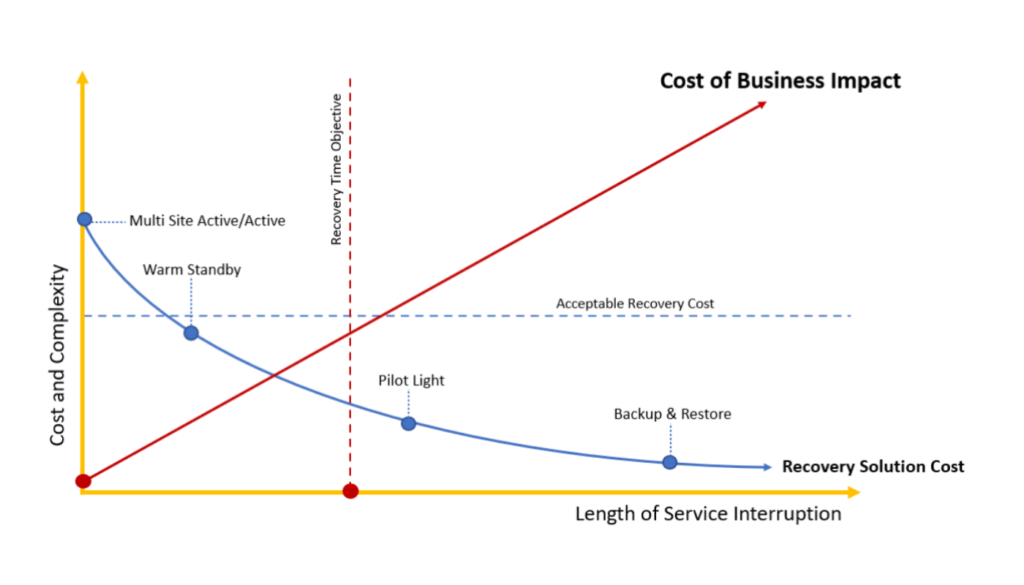Top 3 Things To Consider in Your Disaster Recovery Plan
Planning for the worst can quickly become a complex project, start with these 3 things to get a good head start
Even a minimal interruption of service can mean disaster for an organization, implying thousands of pounds in data loss. A disaster can be caused by a cyber attack, human error, or a natural disaster. Business continuity is critical for every payroll and recruitment company regardless of the fact if it runs its systems using the cloud or on-premise infrastructure.
A solid disaster recovery plan helps organizations stay up and come back to full operational capacity in the event of failure or attack. These days, every company can become a victim of a cyber attack. The goal of having a business continuity strategy is to minimise the negative effects of events that might take place. It is important to have a well-thought-out plan so that in case of an incident, no valuable time is wasted trying to come up with a solution or seeking appropriate help.

Read on to learn more
In order to have a foolproof strategy, organizations need to consider all possible risks and have solutions ready for each type of scenario. Backing up essential data, and making sure there are multiple copies stored in different physical locations are just some of the elements to consider in a robust plan. However, the most important part is to regularly test the strategy to ensure that it works as intended and that all employees know what to do in case of an emergency. By being prepared for the worst, businesses can mitigate the damages caused by incidents when they happen and minimize downtime, ensuring their long-term success.
Here are some statistics
According to SysGroup:
- 75% of small businesses have no disaster recovery plan objective in place.
- Hardware failures cause 45% of total unplanned downtime. This is followed by the loss of power (35%), software failure (34%), data corruption (24%), external security breaches (23%), and accidental user error (20%).
- 96% of companies with a trusted backup and disaster recovery plan were able to survive ransomware attacks.
- 93% of companies without Disaster Recovery who suffer a major data disaster are out of business within one year.
When it comes to preparing for the worst, careful planning can go a long way. A well-crafted disaster recovery plan can mean the difference between a brief setback and a long-term crisis and significant financial losses. While putting together a comprehensive plan requires a careful review of all processes and procedures (the complexity of the plan will be dependent on the business situation), however, there are three key considerations that should be at the forefront of every plan.
1. Take the time to create a proper Business Impact Analysis (BIA)
A Business Impact Analysis (BIA) is a process that helps identify resources and assets that are critical to the operation of a business. By conducting a BIA, businesses can gain a better understanding of which areas may be more impacted by a disruption, and how best to protect those areas. Additionally, a BIA can help businesses preview the potential impact of a disaster on operations, and identify steps that can be taken to mitigate those impacts. Ultimately, the goal of a BIA is to ensure that businesses are able to continue operating in the event of a disruptions, and that any impacts are minimized. By identifying critical resources and assets, a BIA can play an essential role in protecting businesses from the potentially devastating effects of a disaster.
2. Establish how much damage the business can sustain by setting your RPO and RTO
One of the most important steps in creating a successful disaster recovery plan is to calculate your organization’s recovery time objective (RTO) and recovery point objective (RPO). The RTO is the amount of time that your system can be down before suffering irreparable monetary losses, while the RPO is the amount of data loss your organization can tolerate before incurring too much damage. For example, if losing 4 hours of data would be catastrophic, then you would need to plan for an RTO of less than 4 hours. By understanding your RTO and RPO, you can ensure that your disaster recovery plan is able to meet the needs of your organization.
Setting your RPO and RTO is probably the most vital thing in creating a robust disaster recover plan. We have covered these in more detail in this blog post

3. Select the most suitable and cost efficient way of restoring your systems and infrastructure in case of a disaster
There are four main recovery methods you can choose according to your organization requirements and preferences: backup and restore, pilot light, warm standby, and hot standby. Backup and restore involves backing up data on a need-to-do basis and restoring it in the event of a disaster. However, the restoration can consume a lot of time and resources as the system does not keep data on standby. Pilot light involves keeping a core of critical applications and data running to enable quick retrieving in the event of a disaster. Warm standby involves duplicating the system’s core elements and keeping them running on standby at all times. In the event of a disaster, this duplicate can be promoted to primary to maintain operations. Hot standby involves making a full replica of the data and applications, deploying it in two or more locations. This method provides the highest level of protection but is also the most expensive.
And it’s a wrap…
No business large or small is immune to disasters such as cyber attacks, or on-premise infrastructure failure and it’s more important than ever to have a disaster recovery plan in place. This plan helps to minimize the damage in case of an unexpected event. There are three key things to think about when creating your disaster recovery plan: understanding your business impact analysis (BIA), understanding your recovery time objective (RTO) and recovery point objective (RPO), and selecting the best recovery method. By following these guidelines, your business will have a good head start for preparing for any potential disaster.
Here at My Digital, we understand the risk of cyberattacks in the payroll and recruitment sector, that’s the reason we have created the Disaster Recovery Standby Solution (DRSS)
It’s a backup payroll or pay&bill platform with your data set up in our cloud. It can ensure business continuity in the toughest of times. Best bit? You don’t have to be our existing customer to be protected by DRSS. Learn more here and feel free to reach out to us to find out about the functionality, implementation and pricing.



